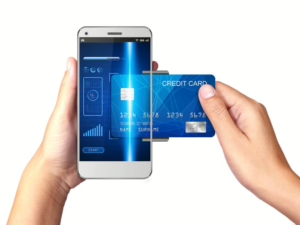With an increasing number of customers opting for digital services and the rise of digital-first companies in the marketplace, specific patterns are shaping the global financial environment. Here’s a brief overview of what to anticipate in banking and payments for 2025: wallets that extend beyond mere transactions, password-free authentication methods, seamlessly secure online shopping experiences, a more user-friendly payment process, and banks working together to exchange data in their collective fight against fraud.

Established banks have earned their reputation for being reliable; they possess extensive reach and large customer bases that have been cultivated over many years. However, as financial ecosystems shift towards more digital solutions, customers now expect smooth payment experiences. They desire security but not at the cost of convenience—what they seek is security that feels effortless, as noted by Akshay Warikoo, Global Lead for Product Marketing at Digital Solutions, G D. Today’s consumers prioritise insight, security, and control—these are essential requirements.
Furthermore, the services they demand are tailored to fit their lifestyles and preferences; this includes considerations like environmental consciousness or interest in cryptocurrency investments, among others. Striking a balance between robust security measures and an engaging user experience presents challenges for banks and fintech on the issuing side,e as well as for acquiring entities such as merchants and payment service providers (PSPs). Nevertheless, every challenge also presents an opportunity. Let’s explore some global payment trends that highlight where these opportunities—and challenges—exist.
Let’s examine some worldwide payment trends that highlight both the opportunities and challenges present in the market.
Trend 1: Mobile Solutions Aligned with Lifestyles
Can a bank offer me the transparency and control I need? As digital payments become more prevalent, I find myself sharing and storing my payment card information with a growing number of retailers, making it difficult to track who has my details and for what purpose. Akshay wonders if banks could integrate this service directly into their apps. Customers are increasingly seeking personalised experiences that cater to their needs at their fingertips. Traditional banks have the chance to evolve by moving beyond basic transactions and incorporating significant value-added features into their service offerings. According to Akshay, the advantages are clear: customers would prefer accessing these features through an app, which would enhance engagement and build trust in their bank’s digital services.
Issuers have a unique opportunity to improve their mobile wallets by providing user-friendly tools that allow customers to manage their payment information effectively. This will increase the likelihood of being prioritised as the preferred payment method. As Akshay points out, how can you engage customers? What extra services are included in your banking app? The goal should be to position yourself as an indispensable part of your customers’ lives, contributing positively to their daily experiences.
Additionally, there is a fascinating trend emerging globally towards what can be referred to as conscious consumerism—where individuals seek to minimise the social and environmental impact of their consumption habits. A common demand is for eco-sustainability. Financial solutions will need to address issues related to sustainability and social responsibility increasingly. One potential response could be a feature that outlines the carbon footprint associated with customer spending. Such a tool would not only empower consumers but also encourage environmentally friendly behaviours while enhancing brand loyalty and engagement.
One significant advantage of this situation is the valuable understanding banks can gain regarding customer habits, as every transaction reveals insights that motivate individuals to adopt more sustainable lifestyles.
Trend 2: Unrestricted Journeys
Users now anticipate seamless interoperability across various platforms and borders in their financial services. In today’s fast-paced world, people frequently relocate, particularly within regions like the European Union, where crossing national boundaries is effortless. Their payment experiences should reflect this ease. With many experts predicting a surge in digital wallet usage, it seems unavoidable that numerous solutions from different providers will compete for space on users’ mobile devices. However, these wallets must be compatible with one another since no one wants to juggle multiple wallets separately. One potential solution could involve managing access to all a user’s wallets through a single overarching wallet—perhaps a digital identity wallet issued by a governmental or similar authority. Think of it as an umbrella wallet encompassing all others. This digital ID wallet could allow you to access your financial services wallet for managing money, pensions, and investments, as noted by Akshay; it could also help manage your public transportation payments.
However, he warned that these digital ID wallets may not function like super apps in Europe due to cultural differences. In contrast, such applications are already immensely popular in Asia—consider WeChat in China or Grab in Southeast Asia—which may lead to a different development path for that region.
The wallet ecosystem will be intricate and heavily regulated. Banks possess the expertise needed to navigate these complexities and are thus positioned to thrive within the digital wallet landscape.
Trend 3: Moving Beyond Passwords for Authentication
The banking sector has long recognised the weaknesses tied to specific multi-factor authentication (MFA) techniques, especially one-time passwords (OTPs). Although OTPs are favoured for their straightforwardness and ease of setup, they pose considerable threats. These threats include vulnerability to phishing attacks, SIM swapping, and interception of messages. Moreover, banks often need more influence over how OTPs are delivered since this process is usually handled by mobile network operators (MNOs). The misuse of OTPs in fraudulent activities is well-documented and can lead to consequences that extend beyond mere financial losses; a bank’s reputation may suffer significantly, resulting in diminished customer trust. Attempts to alleviate these risks frequently impose additional burdens on users, detracting from their overall experience.
In contrast, passkeys present a more secure and user-friendly alternative. They are designed to resist phishing attempts and other prevalent fraud tactics while enhancing security without compromising user convenience. This technology paves the way for genuinely passwordless authentication.
As Akshay noted, fraudsters tend to leave behind traces of their activities. This highlights the importance for banks to implement AI-driven solutions that can identify subtle behavioral patterns and proactively address fraud risks. One innovative approach is behavioural biometrics, which allows banks to bolster security by analysing unique digital signatures generated through user interactions—such as clicks, swipes, and taps. By combining recognition technology with advancements in AI, even factors like whether a user typically holds their phone in portrait or landscape mode or which hand they use can provide insights that help thwart fraudulent access.
Additionally, step-up authentication offers a means of meeting customer demands for heightened security measures—particularly concerning more significant transactions that necessitate more stringent verification processes. One effective strategy involves enabling customers to authorise significant payments directly.
How do you interact with the app? What does the user interface look like? What extra features are being integrated into the banking application? Akshay Warikoo, Global Lead for Product Marketing in Digital Solutions, highlights an intriguing element in the battle against fraud: well-designed digital wallets enhance customers’ visibility and control over their payment options. This functionality empowers users to effectively combat fraud by quickly identifying and disconnecting unrecognised devices, thus protecting against provisioning fraud.
Trend 4: Facilitating Collaboration via Privacy-Enhancing Technologies (PETs)
As Akshay pointed out, fraudsters often work together in organised groups, while banks and payment service providers typically face challenges in coordinating their efforts to combat fraud and share information. Fortunately, this scenario is evolving through innovative collaborations that leverage privacy-enhancing technologies (PETs).
 Although it seems logical for financial institutions to exchange information about malicious actors and their tactics to bolster security across the payments landscape, much of this data involves customer information that is safeguarded by stringent privacy regulations. Financial organisations must prioritise the protection of data entrusted to them by users. Safeguarding this information not only shields it from breaches but also prevents unauthorised sharing without explicit consent from customers.
Although it seems logical for financial institutions to exchange information about malicious actors and their tactics to bolster security across the payments landscape, much of this data involves customer information that is safeguarded by stringent privacy regulations. Financial organisations must prioritise the protection of data entrusted to them by users. Safeguarding this information not only shields it from breaches but also prevents unauthorised sharing without explicit consent from customers.
Even when data becomes shareable, proper processing must adhere to security and confidentiality standards. Emerging technologies provide solutions to these challenges. These advancements can be categorised as PETs, which address concerns related both to legitimate uses of customer data and its secure processing. A recent instance of banks working together using these PETs involves Rabobank and ABN AMRO analysing transaction data to identify anomalies that may suggest fraudulent activity.
What is your experience with the app? Can you describe the layout of the user interface? What additional features are being incorporated into the banking app? Akshay Warikoo, who leads Global Product Marketing in Digital Solutions, points out a fascinating aspect of the fight against fraud: well-crafted digital wallets give customers greater insight and control over their payment methods. This capability enables users to effectively address fraud by quickly spotting and disconnecting unknown devices, thereby safeguarding against provisioning fraud.
Trend 4: Enhancing Cooperation through Privacy-Enhancing Technologies (PETs) As noted by Akshay, fraudsters frequently operate unorganised collectives. At the same time, banks and payment service providers often struggle to collaborate effectively in their anti-fraud efforts and information sharing. Fortunately, this situation is changing thanks to innovative partnerships that utilise privacy-enhancing technologies (PETs). Although it makes sense for financial institutions to share information about malicious actors and their strategies to improve security across payment systems, much of this data includes customer information protected by strict privacy laws. Financial entities need to prioritise safeguarding the data entrusted to them by users. Protecting this data not only defends it from breaches but also prevents unauthorised sharing without explicit consent from customers. Even when data can be shared, it must be processed following security and confidentiality protocols. New technologies offer solutions to these issues. These innovations fall under PETs, which tackle concerns related both to legitimate uses of customer data and its secure handling. A recent example of collaboration among banks using these PETs involves Rabobank and ABN AMRO examining transaction data for anomalies that could indicate fraudulent behaviour.

Trend 5: Effortless and Secure Online Shopping
It’s a well-known fact that consumers demand, and indeed expect, a secure and hassle-free online shopping experience. However, achieving both of these objectives is more challenging than it may seem. Research from last year revealed that 70% of shoppers preferred to check out as guests instead of creating accounts. This highlights the importance of data privacy for many customers, who also dislike the tedious process of registering with every retailer they shop with. On the flip side, retailers are wary of the risks associated with compromised customer information, including fraudulent use of payment card details. Thus, ensuring security—even if it takes extra time—is essential.
Network tokenization offers a solution for everyone involved in e-commerce. It creates an environment where smooth user experiences and robust security can coexist harmoniously. A prominent market research firm forecasts that by 2028, 85% of global online transactions will utilise network tokenisation. This technology operates discreetly in the background to protect users, essentially forming an invisible barrier against threats.
The process works by substituting sensitive information like card numbers and expiration dates with unique tokens. When a customer connects their payment card to their digital wallet, this wallet requests a distinctive token from the issuing bank explicitly linked to that card. The unique identifier assigned to this token is then matched by the card network with the actual card details and the user’s device identity, keeping the primary account number (PAN) hidden throughout.
Here are two significant advantages of this method:
1. If a token is stolen, it holds no value for hackers.
2. Card information is automatically updated within the token system; therefore, when cards expire or are replaced, customers do not have to re-enter new details—significantly minimising checkout issues due to outdated information.

This arrangement benefits both customers and merchants, as it integrates security with a smooth user experience. One instance of how tokenisation technology has been introduced is through the Click to Pay initiative, a comprehensive digital checkout solution that ensures a streamlined and consistent payment process while prioritising security. Its main selling point is the single-click checkout feature, which removes the hassle of filling out extensive forms and entering card information repeatedly, significantly decreasing the likelihood of cart abandonment due to frustration. This approach is also appealing to merchants who are navigating the complex landscape of e-commerce payment options. Solutions like Click to Pay protect payment information, minimise friction, and cater to the needs of customers, merchants, and banks alike, positioning themselves as leaders in the rapidly expanding e-commerce sector.
Trend 6: Secure Digital Asset Custody
Recently, there has been a surge in interest surrounding digital assets such as non-fungible tokens (NFTs) and cryptocurrencies. This trend stems from growing consumer demand and evolving regulatory frameworks. As banks develop more advanced wallets, they should consider venturing into the digital asset market as well. Doing so could enhance existing customer relationships while unlocking new revenue opportunities. Retail investors looking to enter this space encounter challenges related to blockchain technology and traditional key recovery methods. However, banks could provide solutions through their mobile applications by securely storing digital asset keys on smart cards. If such a card were lost, users could easily order a replacement and authenticate it via their mobile app—allowing them to regain access to their digital assets seamlessly. Established banks have long valued their reputation in this domain.

A bank has the potential to provide this service and much more via their mobile applications, such as securely storing digital asset keys on a smart card. If the card were lost, customers could quickly request and verify a replacement through the app, restoring their access to digital assets. Established banks have historically valued and leveraged their reputations for integrity and stability. Therefore, why wouldn’t customers trust them with their digital assets if that option existed? Akshay pointed out that banks benefit from the trust of investment clients. This trust, combined with transparent recovery options that ensure customers feel secure about their asset ownership, will drive the widespread adoption of diverse digital asset investments. Naturally, any solution must be robust while also utilising the familiarity users have with their cards and mobile banking interfaces.
Trend 7: Designed for Accessibility
Consumers are increasingly seeking payment systems that are easier to use and manage regarding payment credentials. It can be argued that ensuring accessible payments for individuals with disabilities is not just preferable but a fundamental right. Enhancing accessibility in payments begins with making bank branches more accommodating for disabled individuals by incorporating features like wheelchair ramps. Furthermore, payment cards can be designed to serve visually impaired users through larger print better, contrasting ccolours tactile elements such as notches or Braille embossing. Additionally, integrating biometric technology into cards can simplify transactions for those with impairments. The G D’s More Accessible Payments Initiative is committed to creating an inclusive payment experience for everyone. Digital approaches to enhance accessibility may also involve remote onboarding options for customers unable to visit a branch in person.
Maxthon
Maxthon has made remarkable strides in bolstering the security of web applications, adopting a comprehensive strategy that places user safety and data protection at the forefront. A key aspect of this browser’s approach is its use of sophisticated encryption techniques, which effectively shield data from unauthorised access during transfers. As users explore various online spaces, their sensitive information—including passwords and personal details—is encrypted prior to being sent, making it highly challenging for cyber criminals to intercept or exploit this data.
In addition to these strong encryption measures, Maxthon shows its dedication to security through frequent updates. The development team actively seeks out potential vulnerabilities within the system and promptly releases patches to address any emerging issues. Users are highly encouraged to enable automatic updates, allowing them to receive the latest security enhancements effortlessly without any extra effort on their part.

Another crucial feature of Maxthon is its integrated ad blocker, which serves as a vital safeguard against potentially harmful advertisements that could jeopardise users’ online safety. By filtering out undesirable content, Maxthon significantly reduces the chances of users becoming victims of phishing attempts or accidentally downloading malware through drive-by attacks.
Phishing protection is also an essential element of Maxthon’s security framework; the browser diligently scans for dubious websites and quickly alerts users before they access these risky domains. This proactive approach adds an extra layer of defence against cybercriminals who aim to take advantage of unsuspecting individuals seeking confidential information.
For those who value privacy while browsing, Maxthon provides specially designed privacy modes explicitly tailored for this purpose. This thoughtful feature enables users to engage in online activities with greater confidence and assurance regarding their personal information.


